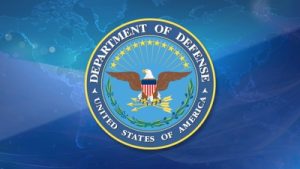
The mission of the Department of Homeland Security (DHS) is widely understood, "to safeguard the American people, our homeland, and our values." However, in carrying out this mission, DHS touches a number of areas that may not seem intuitively tied to homeland defense but are nonetheless critical challenges facing the nation as well as agencies across government.
Artificial Intelligence
DHS has a key role in securing the homeland from cyber threats. The department's Cybersecurity & Infrastructure Security Agency (CISA) is the operational lead for federal cybersecurity and the national coordinator for critical infrastructure security and resilience. With this responsibility, CISA and other DHS agencies play a key role in shaping policy and guidance around emerging technology use. Today, they are keenly focused on helping agencies safely and ethically use Artificial Intelligence (AI) to improve mission effectiveness.
DHS is leading by example. AI is currently being used to aid border-patrol efforts, combat drug trafficking, and create age-progression estimations of missing children. While implementing AI itself, DHS is also focused on how adversaries may use AI and creating ways to defend against the technology being used to spread disinformation, create more advanced cyber attacks, or speed the development of weapons. Continue reading






